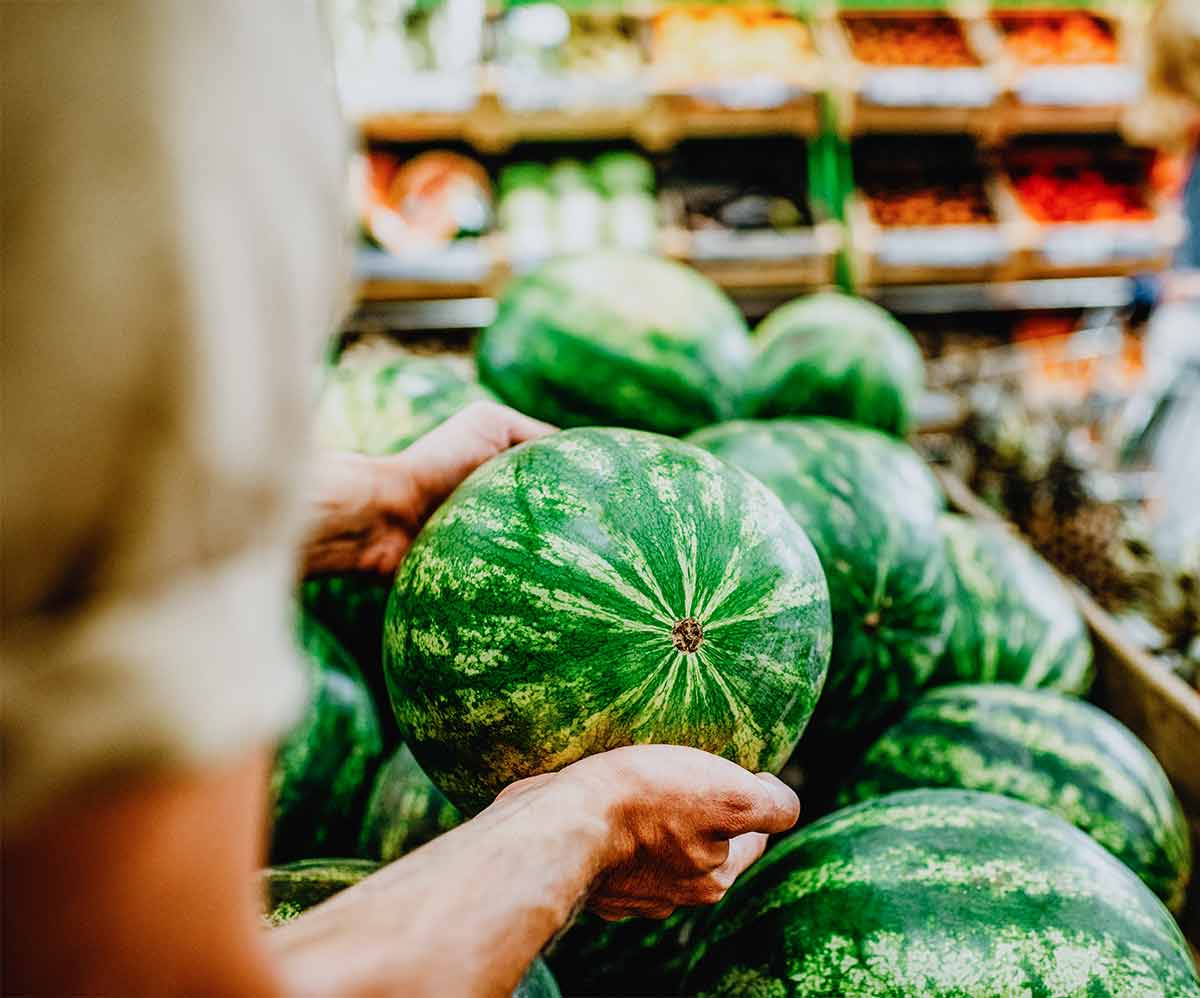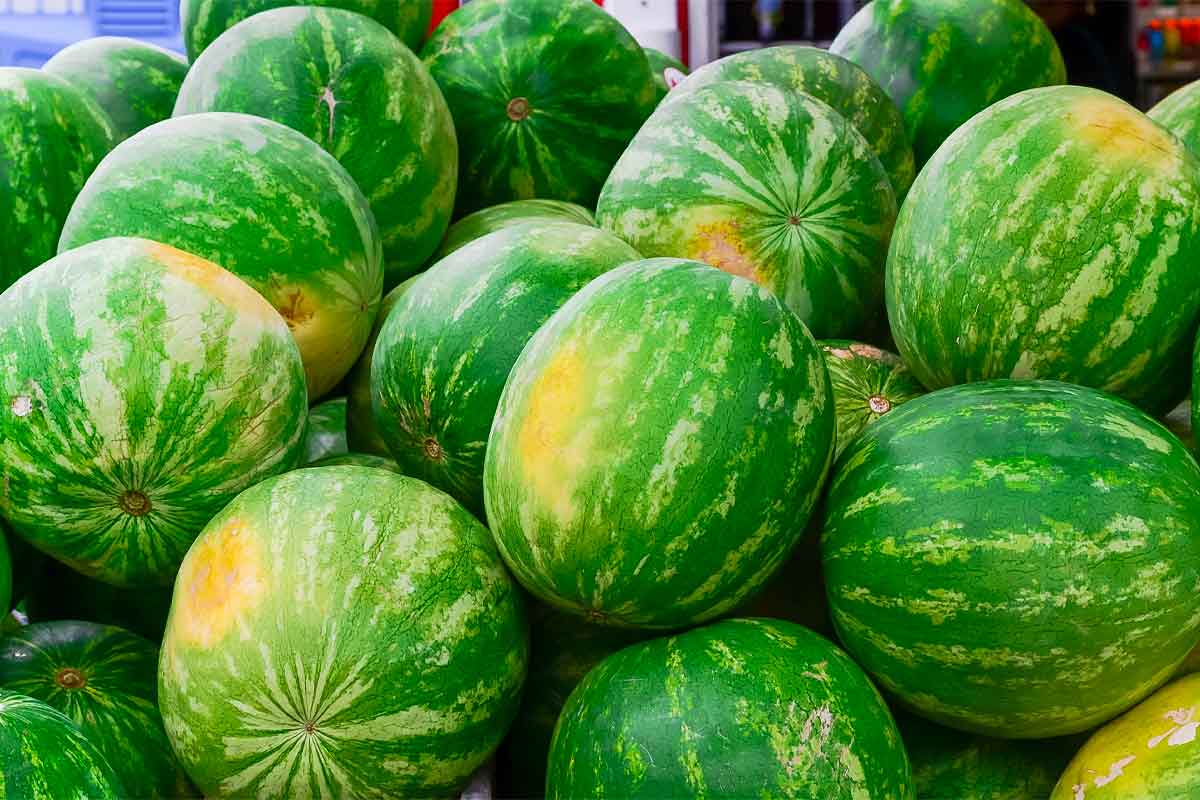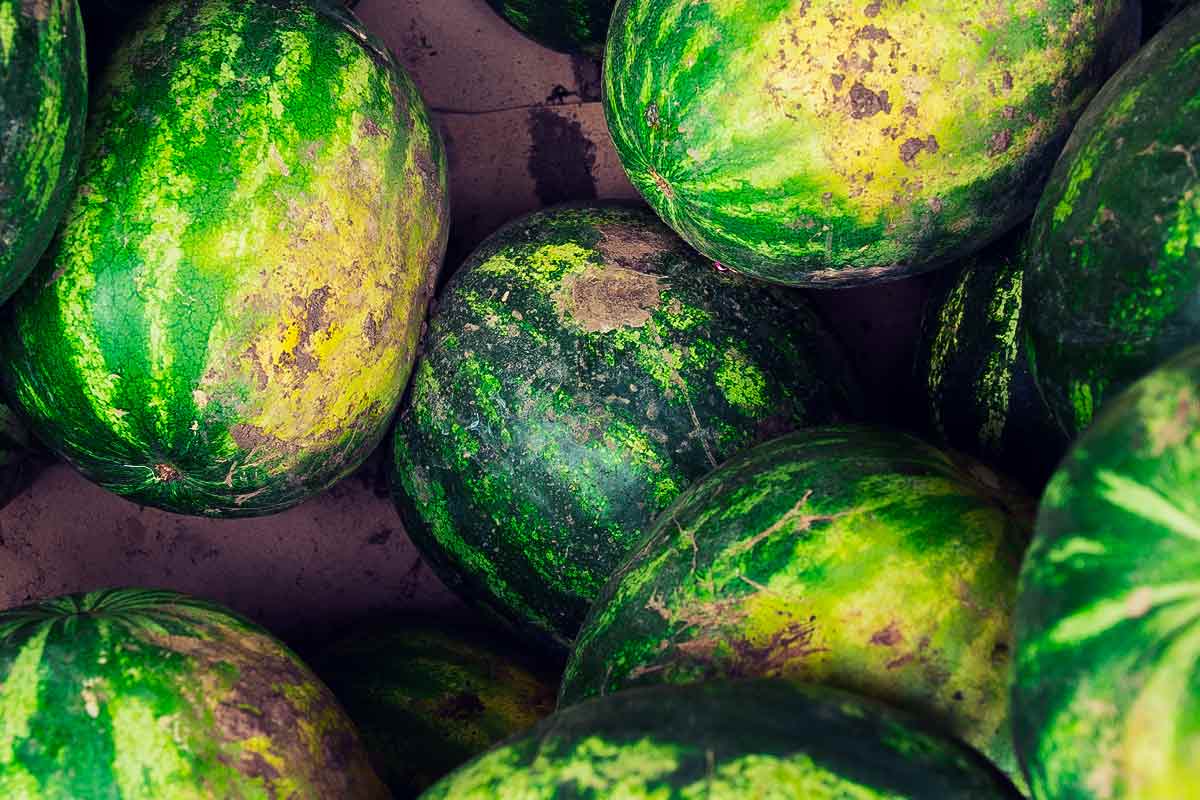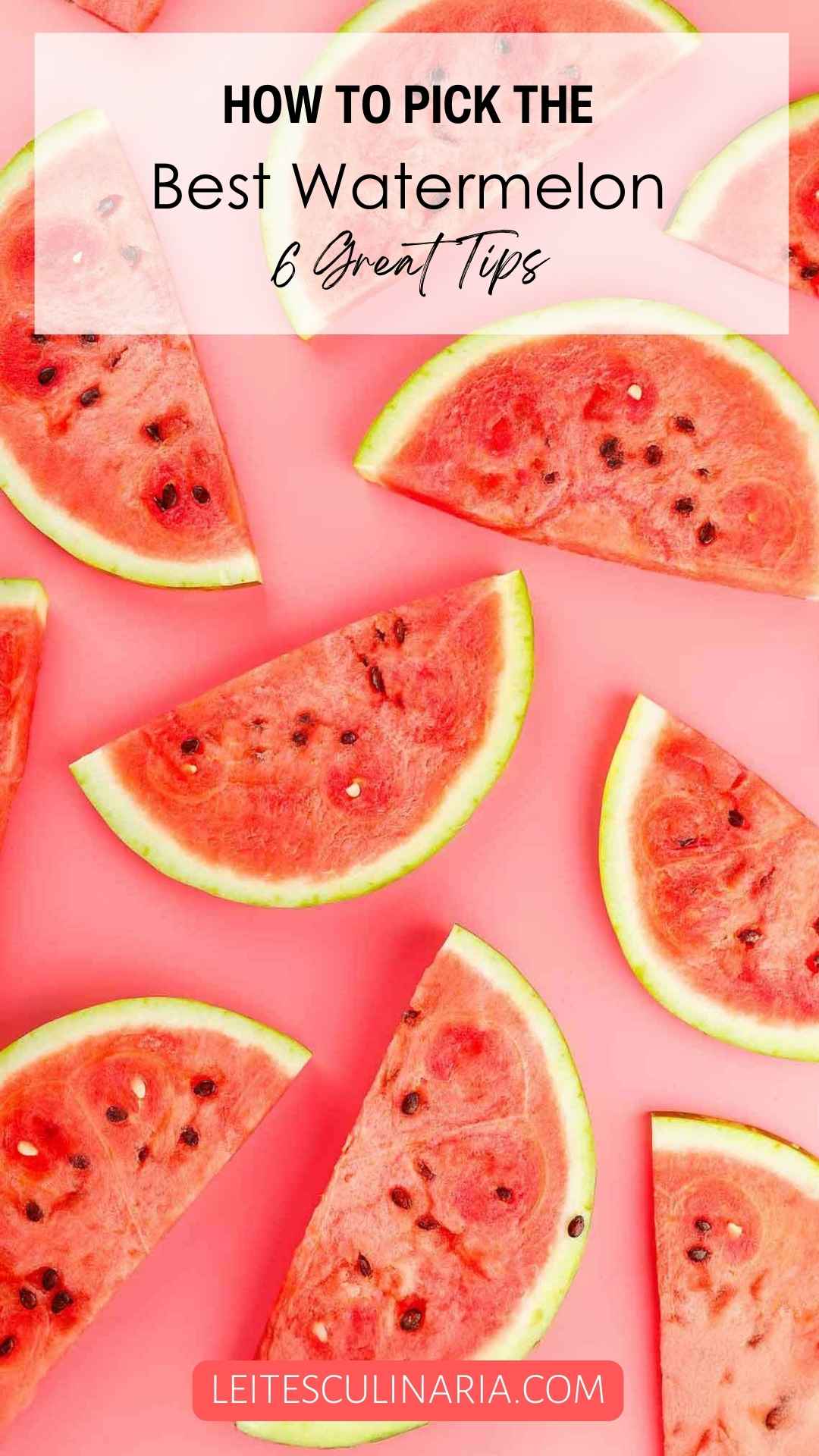
Watermelon, one of summer’s cool, shivery treats, can be a blast or a bust. You know that feeling when you expect sweetness but instead get a ho-hum mouthful of watery nothingness.
Here are six tips on how to select a watermelon that’s perfectly ripe.
1. Pick it up

A ripe watermelon should feel heavy for its size. And heavy is a good thing. (As a man of portly proportions, I love being able to write that!) So, when shopping, always choose the heavier of two same-size melons.
2. Look for the yellow spot

Since watermelons grow on the ground, the spot where they’re in contact with the earth gets no light–hence no green color. That area is called the “field spot” and is probably the best indicator of ripeness and sweetness. Look for a spot that’s yellow in color, which means it’s been ripening on the vine for a long time. A light-colored or white spot means the melon was picked too early. And too early means a fruit that’s fakakta.
3. Give it a good spanking
Okay, you can settle for a good rap with your knuckles. A ripe watermelon will feel sturdy and have a resonant, satisfying hollow sound. That means it’s bursting with watermelon juiciness and is at its peak of ripeness. If the thwap is dull sounding or the fruit feels soft, pass on it.
4. Look for a uniform shape
We here at LC embrace the irregularities of food and life. We welcome misfit veggies and adore ugly fruit. But, sorry, not when it comes to watermelon. We go for cover-model shapes. If your melon is bumpy or has ridges, it’s most likely the recipient of inconsistent love from nature–meaning it was alternately neglected and smothered in sun or water. And you don’t need a melon with emotional baggage.
5. Find the sugar spot

No, this isn’t the title of some pop song with explicit lyrics. The sugar spot is a dark brown rough patch, or webbing, that looks almost like dirt. This is where the sugar is seeping out of the fruit. Sugar=sweetness. Sweetness=a good time had by all.

6. Go for dull
A shiny, dewy complexion ain’t for watermelon. A mature, has-seen-the-garden melon has a dull surface…and it’s what lies below that lackluster surface that counts. Sweetness.

And now . . .
One of summer’s simplest rituals is eating watermelon out of hand (and, if you’re a kid, spitting the seeds at your brother). But have you ever considered watermelon with a sprinkle of sea salt? The cool of watermelon spiked with the heat of Aleppo pepper? Or juxtaposed with salty feta and tangy cherry tomatoes? Or rubbed with the cut side of fresh ginger? Or even tossed on the grill—yes, we’re telling you to heat watermelon. Just brush both sides with a wee bit of olive and place it on the grill for a few minutes to take the edge off its crispness. And, of course, you can always churn it into watermelon sorbet.

So now you have superpowers. Go, now, dear fruit lover, and be the Master of Your Own Watermelon-verse.

Originally published August 8, 2020
















Someone in the grocery store told me to pick a watermelon that had the smallest round circle at the end of the watermelon opposite end of where the stem was. He picked it for me and it was a sweet succulent watermelon. Have you ever heard of that before?
Linda, no, I’ve never heard that! I wonder if any of our readers have?
I love your recipes and your sense of humor. Everything I’ve made from your site is delicious. Thanks for all you do, especially the watermelon info.
Carol
Thank you, Carol!
I’m not a fan of watermelon but I LOVE me some La Chamba and I absolutely have to give you props for the use of the word fakakta!
Happy Memorial Day and I hope all your watermelons meet all your criteria!
Why, thank you, dear rainey!!